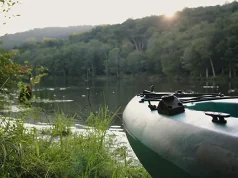Planning a trip to Hawaiʻi involves crucial decisions beyond the typical choices of which islands to visit or what activities to pursue. An equally important, but often overlooked aspect of the planning process, is determining who to collaborate with during your stay. Far removed from the mainland, and the only U.S. state composed entirely of islands, Hawaiʻi deserves to be approached with mindfulness and respect. Ensuring your visit contributes positively to the local ecosystem and community is not just a thought, it’s an essential.
Let’s take Big Island for example, a place that we’ve explored on a few occasions now and consider one of our favorite islands of the archipelago. Notably the least populated among the Hawaiian islands, its recent formation and ongoing volcanic activity contribute to its unique allure. The island’s active geological landscape is often cited as a reason for the island’s lower population density, with some residents and potential newcomers exercising caution about living in such an ever-changing environment. In fact, the most recent volcanic event occurred as recently as December 2022 at Kilauea within the Volcanoes National Park!
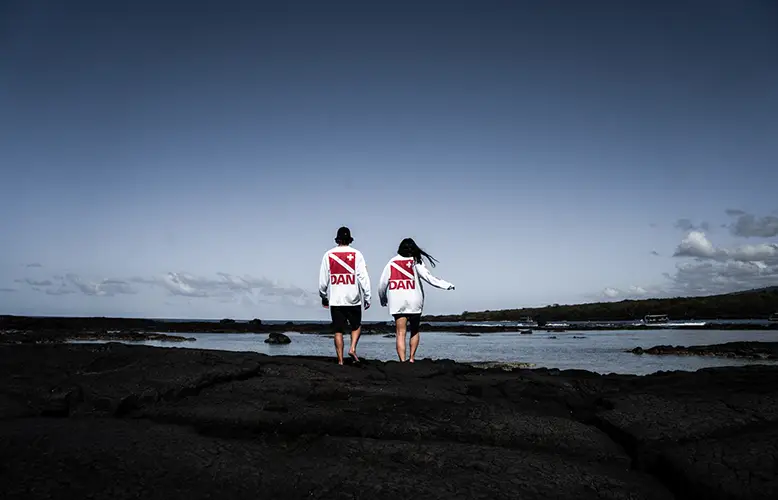
Despite its volcanism, Big Island continues to attract visitors globally, eager to immerse themselves in its unparalleled natural beauty. Known as one of the more “wild” islands, Big Island offers an array of sights both on land and beneath the sea. We’re talking staggering cliffs, incredible coastal trails covered in lava rock, black and green sand beaches, national parks and underwater sites that have captivated people for decades. The journey around the island, particularly along the east side, often feels like a crash course into nature’s greatest hits, where one can momentarily lose themselves in the pristine and untouched surroundings.
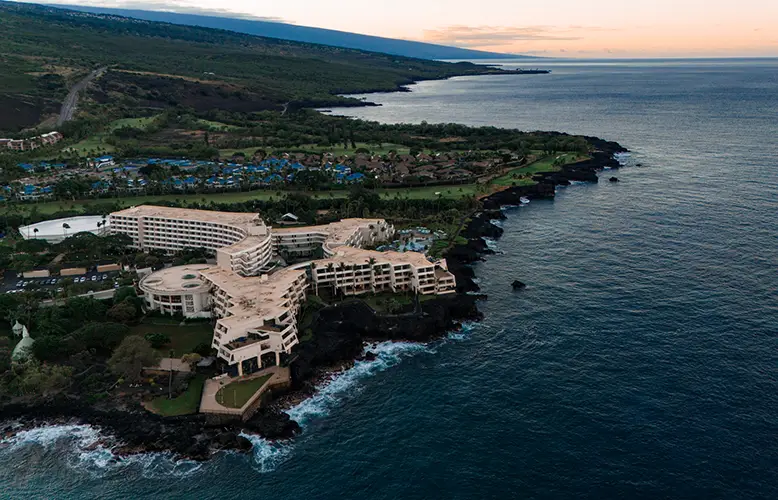
Kona stands out as Big Island’s premier tourist destination, largely celebrated for its world-renowned coffee (of which I did not try because I loathe the taste of coffee, so you have to take other people’s word for it), considered among the finest (and priciest) globally. Beyond the allure of its coffee plantations, the region is also famed for its volcanic landscapes, especially Mauna Kea. This dormant volcano is celebrated as one of the planet’s prime stargazing spots, thanks to its minimal light pollution. Contrary to common belief that Mount Everest is the tallest mountain, Mauna Kea claims this title when measured from base to summit, with more than 10,210 meters of its mass extending from the ocean floor to beach to the peak, making it the largest mountain on earth.
But what brings most people to Kona is what dwells in the ocean surrounding it: the manta rays.
Here’s the thing about Big Island that makes it even more special than my description could even suggest: its volcanic birth simultaneously created both the island itself and an encircling deep trench known as the “Hawaiian Deep.” This geological feature acts almost like a moat, drawing large pelagic animals unusually close to the shoreline. Whereas in other regions you might need to venture far offshore to witness pelagic life, Big Island offers the extraordinary opportunity to observe these magnificent creatures right from its coastlines, making the underwater spectacle remarkably accessible.
Because of this, and certainly since the early 90s, there’s been a major influx in tourism with operators taking people out left and right to see the “magic of the manta rays.”
But there’s been a few long-standing teams on the island that have put the best practices in place to make diving with the mantas not only accessible, but safe and sustainable as well. And if you’re going to venture out to this volcanic, active, raw and wild island, you need to make sure that you’re going with the original pros.
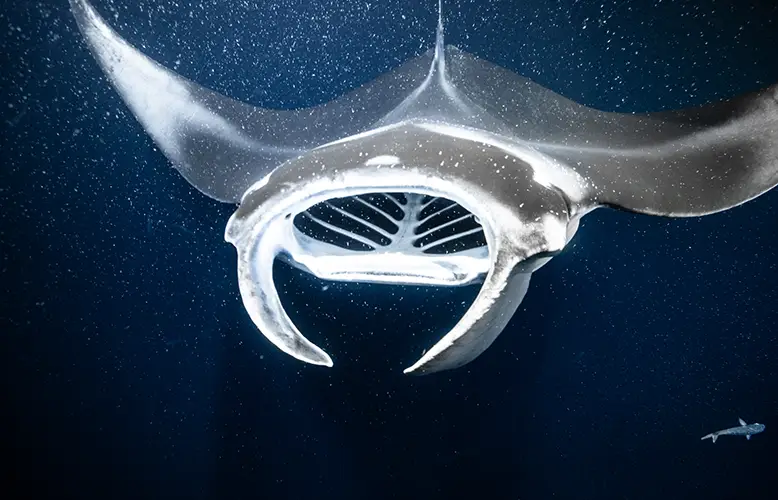
This is how we met the “Manta Man” in the flesh. Yes, he’s literally called that because of his 30-year career studying, observing and protecting the manta ray population on Big Island. But this wasn’t a name that he gave to himself. Keller Laros was filming with Canadian Discovery Channel, giving a history lesson on Big Island’s manta rays. Wearing a shirt with a large “M” on the front, the filming crew dubbed him “Manta Man,” and the rest is history.
After spending a considerable amount of time with Manta Man, we learned one thing for sure. Between his larger-than-life personality and his frequent, fast-paced Dad-jokes (only surpassed by the even faster pace of his dialogue), Keller truly is one of the most genuine and kind-hearted people out there. Within moments of meeting him, it was extremely apparent the depth to which cares about the people and mantas around him, and about the sport that brings the two together: diving.
Our flight was delayed getting into Kona, but Keller was there at 10pm to pick us up. We had left a few things behind on the boats, and Keller was there to look for them. And when we were leaving he sent us off into the sunset, plotting the day we would see him again. The guy is a mensch!

Back in 1985, Keller did his first manta dive in front of a property on Kona called the Outrigger Kona Resort and he found himself quickly falling in love. First established in 1972 as the Kona Surf Hotel, it wasn’t until February 2020 that it was bought by Outrigger Hospitality Group. This team has spent the last few years taking the 509-room oceanfront property and transforming it from the Sheraton Kona Resort & Spa at Keauhou Bay to the now-standing Outrigger. Today, this is considered the “manta hotel” as you can see manta activity from the lava rock shoreline day or night. And because of this strategic position, the Outrigger is one of Keller’s many homes on the island.
Only a few years before Keller’s arrival on Kona, one local dive team in particular realized the lights shining in the water from the hotel were attracting large groups of manta rays to feed on plankton.
The hotel lights created an unintentional spectacle of the mantas feeding frenzy at the Outrigger. But the phenomenon inspired Jeff and Terri Leicher, the husband-and-wife team of Jack’s Diving Locker. Recognizing the opportunity to better understand these magnificent creatures, they pioneered an experience that leveraged the mantas’ natural nighttime activity, effectively putting manta night diving on the map.
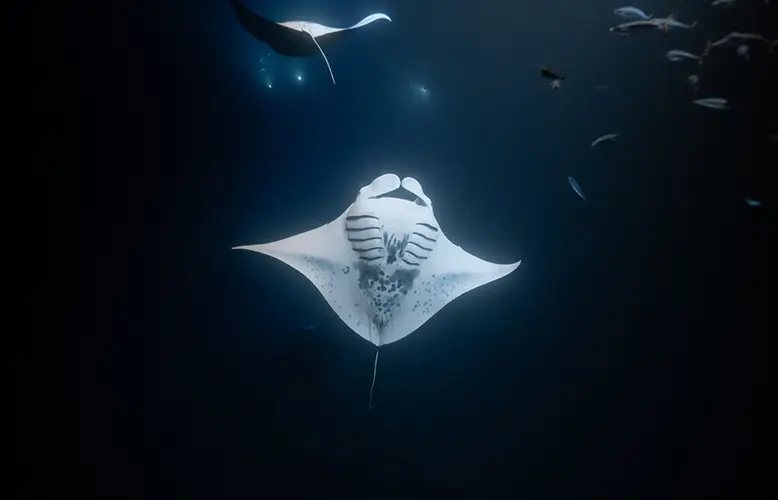
This transformative dive experience captivated Keller, radically altering his life’s trajectory as he dedicated himself to developing sustainable tourism practices centered around manta ray diving in the 90s. Fast forward to the present, the Laros family became co-owners of Jack’s Diving Locker, where he regularly conducts manta dives, and has established the nonprofit organization, Manta Pacific Research Foundation. Through both his nonprofit and for profit efforts, Keller has amassed over 14,500 dives—a number that continues to grow—as he commits to educating, training, and inspiring others to engage respectfully and knowledgeably with manta rays in their natural habitat.
Around 2010, Keller, Jeff, and Terri observed a significant surge in the popularity of manta diving, attracting an influx of new tour operators. Recognizing the necessity for established best practices and guidelines for interacting with mantas, whether during the day or at night, they proactively contributed to shaping these standards. Their efforts were aimed at responsibly developing the burgeoning tourism industry, while remaining mindful of the inevitable increase in visitors drawn to the islands for this remarkable underwater experience. The accessibility of manta diving, with options for both snorkeling and scuba diving and minimal boat time required, made it an exceptionally approachable activity for a wide audience, further fueling its appeal.
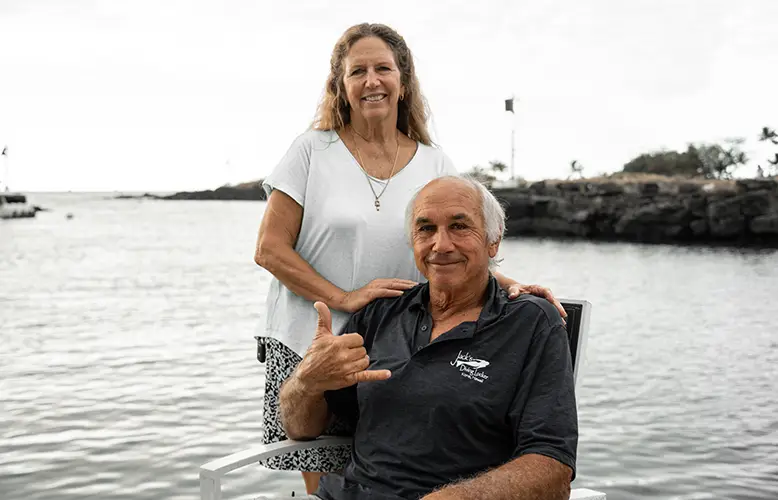
For years, Keller has been sharing the ocean with manta rays, creatures so intelligent he believes they recognize him when he takes his weekly plunges. The connections forged through sharing these remarkable encounters, especially with repeat guests and celebrities drawn by tales of the “Manta Man,” proves there’s something extremely special here. The Kona community, galvanized around the idea of keeping this population of mantas safe, has played a crucial role in nurturing his ongoing and never-ending passion. And this sense of community is something Keller has expressed a deep gratitude for.
Echoing the famous words of Jacques Cousteau, “People protect what they love.” In our many days and nights on the boat with Keller, he emphasized the importance of protecting marine life out of genuine love and passion, rather than merely safeguarding business interests. Inspired by Jeff, his journey reflects a commitment to conservation driven by a deep-seated love for the ocean and its inhabitants. This ethos is what has brought people from around the world to dive off the shores of Kona.
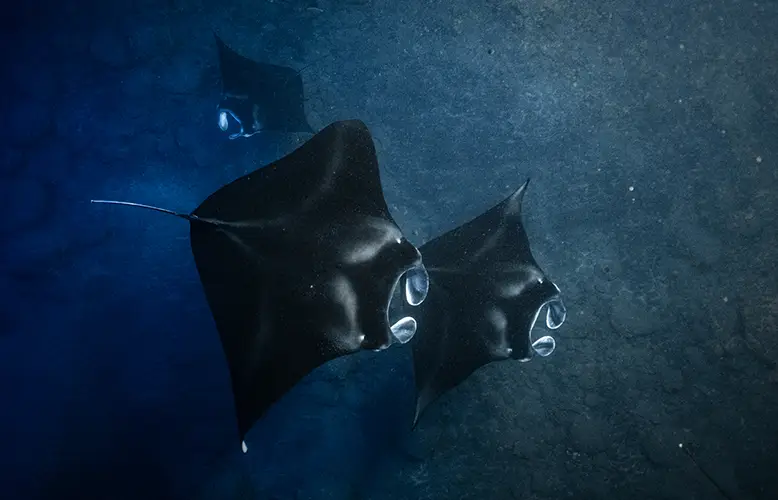
If you’re going to Big Island anytime soon or if this is on the bucket list, my sentiments remain the same: do so with care. Get out in the water and dive responsibly alongside the people who have been working towards manta conservation since the very beginning. Take the time to get to know Jeff, Terri and of course, Manta Man, as they will open your eyes to a whole new world that is their forever home.


